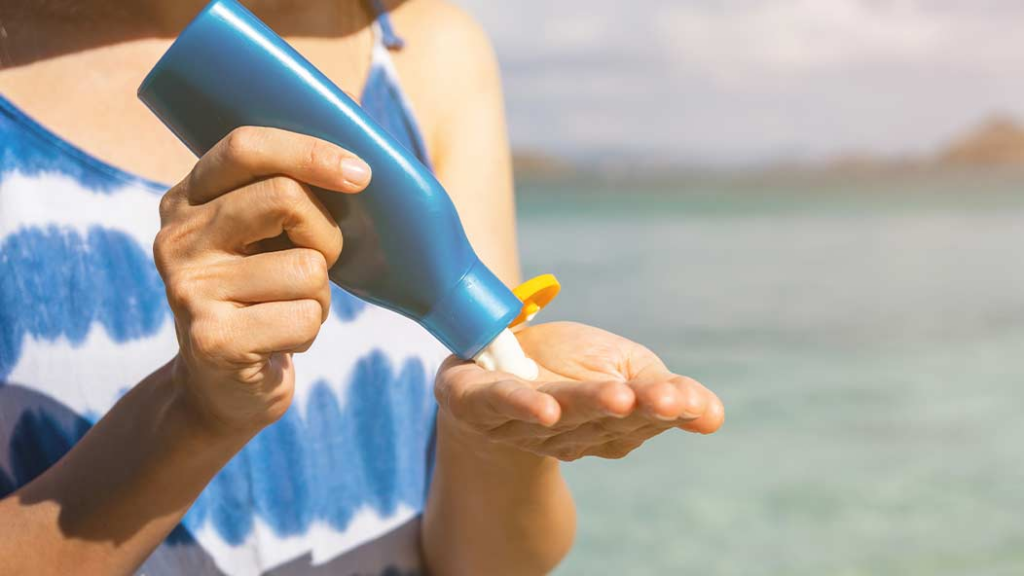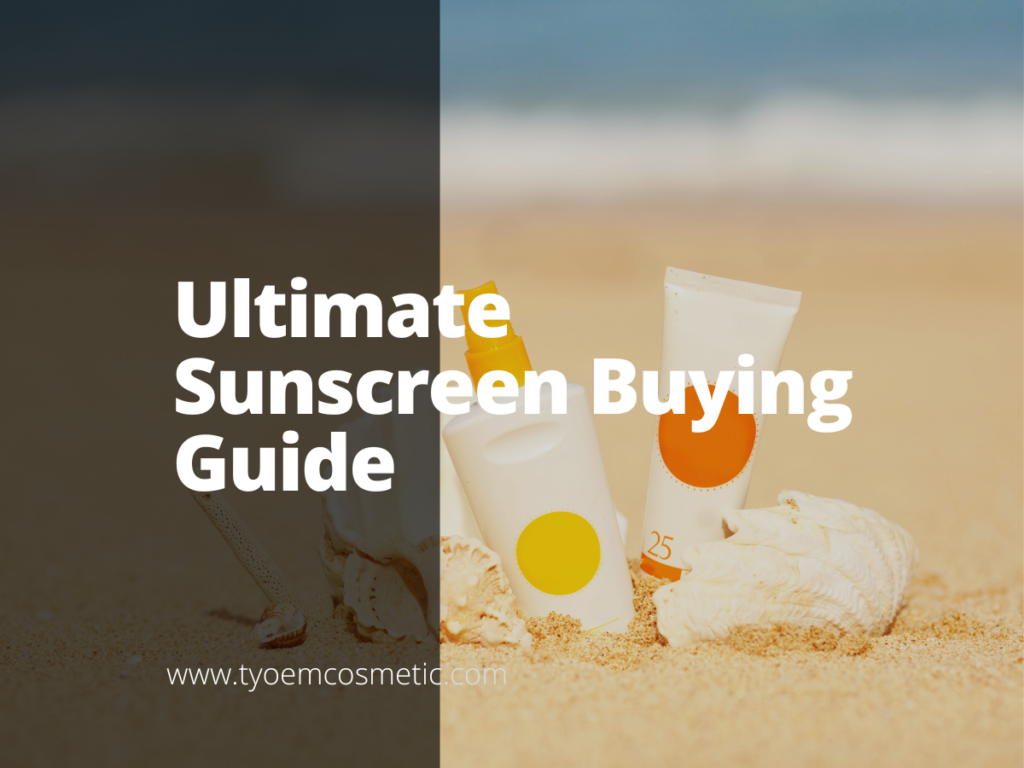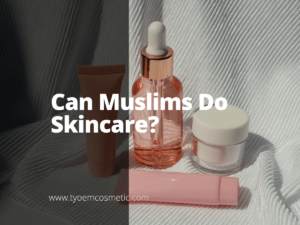No matter if the sky is bright and sunny or overcast with clouds, the sun’s rays continually shower us with ultraviolet (UV) radiation. These rays are responsible for sunburn, premature skin aging, and the development of skin cancer, a condition that affects more people than all other types of cancer combined.
If you’re considering applying sunscreen before heading outdoors, there are important decisions to make. This article is here to assist you in making informed choices when it comes to selecting and properly using sunscreen to protect your skin from the sun’s harmful effects.

1. Why do we need to wear sunscreen?
Sunscreen is a vital tool for shielding your skin from the harmful effects of ultraviolet (UV) rays emitted by the sun. These UV rays come in two primary forms: UVA and UVB.
- UVA rays penetrate the deeper layers of your skin and are responsible for premature aging. They can cause collagen breakdown, leading to wrinkles, fine lines, and a loss of skin elasticity. Without protection, prolonged exposure to UVA rays can result in sagging skin over time.
- UVB rays primarily affect the surface layers of your skin and are responsible for causing sunburn. UVB rays can be especially harmful as they can lead to DNA damage, increasing the risk of skin cancer over time. Sunburn can also be painful, cause peeling, and contribute to the development of skin conditions.
Using sunscreen helps block both UVA and UVB rays, providing a crucial defense against the harmful effects of sun exposure. This protection is essential for maintaining the health and appearance of your skin over the long term.

2. How to select sunscreen?
By considering these factors, you can choose the sunscreen that best suits your skin type, lifestyle, and sun exposure habits, ensuring effective sun protection and skin health
1. SPF Level:
Understanding SPF: SPF (Sun Protection Factor) measures sunscreen’s ability to protect against UVB rays. When applied appropriately, sunscreen can protect a user from sunburn to a relative degree indicated by the SPF, it is advised to use sunscreens with an SPF of at least 15. It is important to note that an SPF of 30 does not offer double the level of protection as an SPF of 15. Instead, when applied correctly, an SPF of 15 shields the skin from 93% of UVB rays, while an SPF 30 sunscreen offers 97% protection, as shown in the following chart.
Consider Your Needs: Your choice of SPF should depend on your skin type, activity level, and sun exposure. SPF 30 is suitable for everyday use and provides adequate protection for most people. If you plan to spend extended time outdoors, especially during peak sun hours, opt for SPF 50 or higher for added protection. People with fair or sensitive skin may benefit from higher SPFs as well.
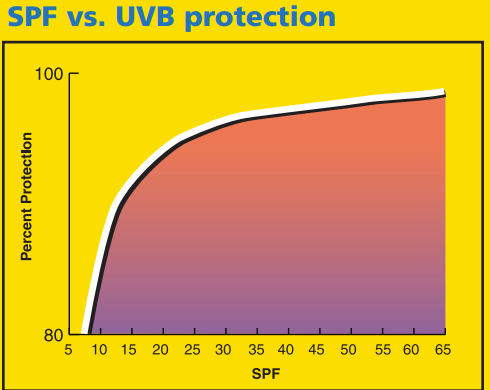
2. Skin Type:
Sensitive Skin: If you have sensitive skin, looking for sunscreens labeled as “hypoallergenic” or “gentle.” These formulations are less likely to cause skin irritation or allergic reactions.
Oily Skin: Individuals with oily skin can choose oil-free or mattifying sunscreens that help control excess oil and provide a matte finish.
Dry Skin: For those with dry skin, consider sunscreens with added moisturizing ingredients, such as hyaluronic acid or glycerin, to keep your skin hydrated.
3. Ingredients:
- Physical Sunscreens: Zinc oxide and titanium dioxide are mineral-based ingredients found in physical sunscreens. They create a protective barrier on the skin’s surface, reflecting and scattering UV rays. These are excellent choices for sensitive skin, as they are less likely to cause irritation.
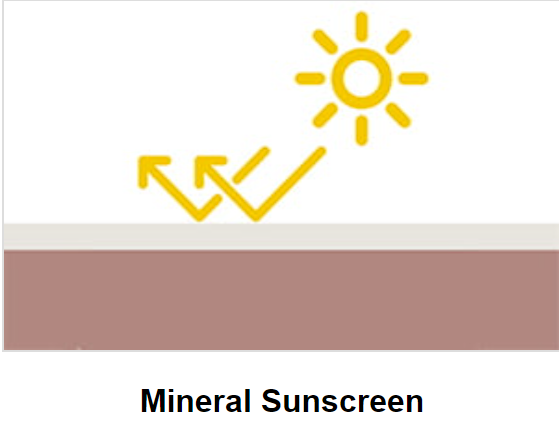
- Chemical Sunscreens: Chemical sunscreens contain organic compounds that absorb UV radiation and convert it into heat, which is then released from the skin. Common chemical sunscreen ingredients include avobenzone, octisalate, octocrylene, and oxybenzone. These are often more lightweight and may be preferred for daily use.
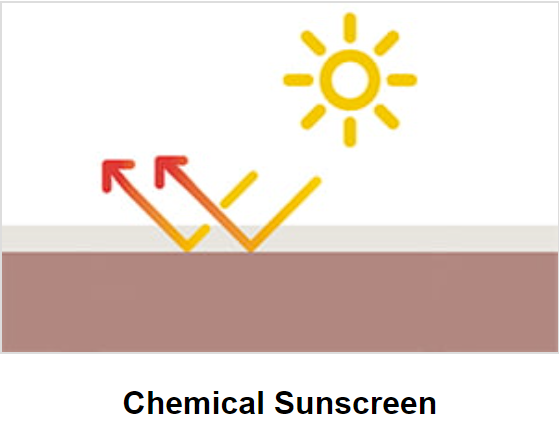
- Combination Sunscreens: Some sunscreens combine physical and chemical filters to offer broad-spectrum protection while maintaining a pleasant texture and appearance on the skin. These can be suitable for various skin types.
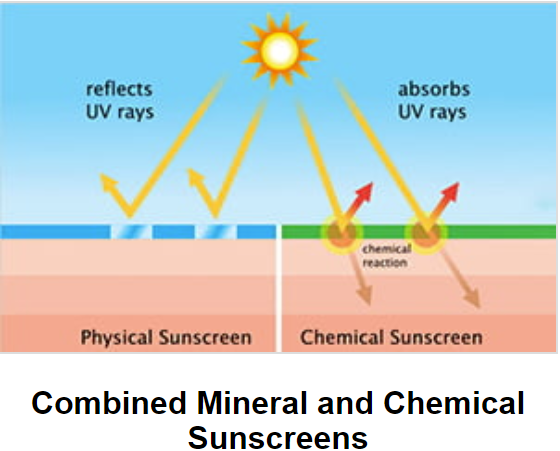
4. Product Form:
When choosing the form of sunscreen, consider your skin type, activity level, and preferences.
- Lotion Sunscreen:
Lotion sunscreens are versatile and suitable for most skin types, making them an excellent choice for both the face and body. They offer precise control during application, ensuring even coverage while providing hydration to the skin.
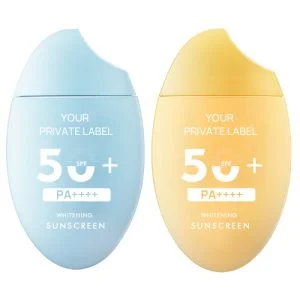
- Spray Sunscreen:
Spray sunscreens are highly convenient for on-the-go application and are particularly ideal for covering large areas quickly. They offer an easy and even application, making them suitable for kids and individuals with active lifestyles.
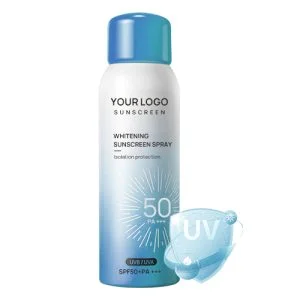
- Gel Sunscreen:
Gel sunscreens are an excellent choice for those with oily or acne-prone skin. Their lightweight, non-greasy formula makes them particularly suitable for use on the face and in hot, humid weather.

- Cream Sunscreen:
Cream sunscreens are versatile and suitable for daily use on both the face and body. They are often chosen for specific skin concerns and may provide additional benefits such as hydration or anti-aging properties.
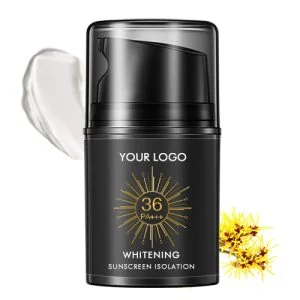
5. Function
There are specialized sunscreen that serves distinct purposes and aligns with specific skin goals. When choosing, consider sunscreen’s characteristics and how they match your needs.
- Tanning Sunscreen:
Tanning sunscreen is the choice when you desire a gradual tan while ensuring UV protection. These sunscreens feature lower SPF levels (typically 4 to 15) to allow for some sun exposure, which is ideal for achieving a tan.
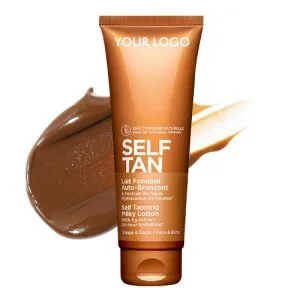
- Whitening Sunscreen:
Whitening sunscreen is tailored to those seeking to address pigmentation issues and achieve a brighter complexion. These sunscreens contain ingredients like niacinamide, vitamin C, or licorice extract, known for their skin-brightening properties.

- Tinted Sunscreen:
Tinted sunscreen is the ideal choice when you want both sun protection and light coverage to even out your skin tone. These sunscreens offer broad-spectrum SPF protection to shield your skin from UVA and UVB rays. Mineral-based tinted options, often featuring zinc oxide or titanium dioxide, provide a natural look.
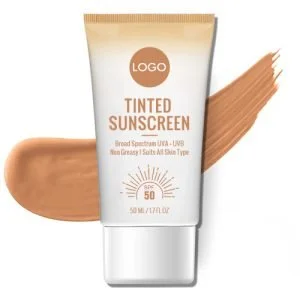
3. How to use sunscreen?
- Generous Application: Apply a generous amount of sunscreen to cover all exposed skin areas. You should apply about one ounce (a shot glass full) of sunscreen to cover your entire body. Most people underapply, so be thorough in your coverage.
- Early Application: Put on sunscreen at least 15-30 minutes before going outdoors to allow it to absorb fully into your skin.
- Regular Reapplication: Reapply sunscreen every two hours, or more frequently if swimming, sweating heavily, or rubbing your skin with a towel.
- Cover All Exposed Skin: Don’t forget areas like ears, neck, tops of feet, and back of hands. Use lip balm with SPF protection for your lips.
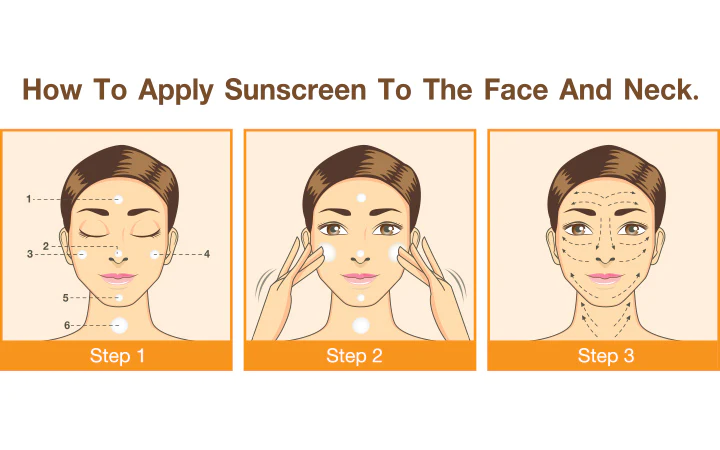
4. Frequently asked questions
- Which sunscreen is best for sensitive skin?
- If you have sensitive skin, consider using a physical sunscreen, as it tends to be gentler. Look for sunscreens labeled as “hypoallergenic” or “gentle” for sensitive skin.
- What does “broad-spectrum” mean, and why is it important?
- “Broad-spectrum” means the sunscreen protects against both UVA and UVB rays. UVA rays contribute to premature aging, while UVB rays cause sunburn. Broad-spectrum sunscreens provide comprehensive protection against both types of UV radiation.
- Is it safe to use last year’s sunscreen?
- Always check the expiration date on the sunscreen bottle or tube. Expired sunscreen may not provide the expected level of protection. It’s best to use fresh sunscreen.
- Are there specific sunscreens for the face and body?
- Facial sunscreens are often formulated to be lightweight, non-comedogenic, and suitable for daily use. However, you can use body sunscreen on your face if it meets your needs.
- What should I consider when choosing water-resistant sunscreen?
- If you plan to swim or engage in activities that make you sweat, choose a water-resistant formula. However, remember that no sunscreen is entirely waterproof, so reapply after swimming or sweating.
- Is there a difference between spray and lotion sunscreens?
- Spray sunscreens are convenient for quick application but may require rubbing in to ensure even coverage. Lotion sunscreens are easier to control for thorough application.
- Should I buy sunscreen specifically for kids?
- Sunscreens formulated for kids are often gentler and less likely to cause skin irritation. They are suitable for children over six months old. You can look for products labeled as “for kids.”
